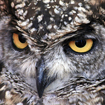Vocabulary lesson. Wildlife
Upper Intermediate level
Description
Materials
Main Aims
-
To provide clarification, review and practice of vocabulary in the context of wildlife: habitats and verbs that describe animal actions
Subsidiary Aims
-
To provide practice of new vocab through speaking for fluency activities
Procedure (40-45 minutes)
Play the 4-minute clip "Wild animals caught barehanded" http://www.youtube.com/watch?v=wJiZ2HgV5E0 and let ss discuss the questions in pairs: Where do you think the action takes place? Do you think Andrew has a good job? Why? What do you think the animals were doing before being caught by Andrew?
1. Distribute HO-1 and let ss do the matching exercise. Peer-check. FB. Exercise.1 Habitat - Wildlife 1. a savanna a. bears, bees, wild boar, wolves 2. a rainforest b. fish, beavers, frogs, dragonflies 3. a temperate forest c. lions, giraffes, cheetahs, crocodiles 4. a reef d. monkeys, jaguars, leopards, parrots 5. a desert e. scorpions, cactus plants, snakes, camels 6. a lake f. sharks, rays, eels, coral Answer key 1. c 2. d 3. a 4. f 5. e 6. b Drill pronunciation of TL (the different habitats).Explain what a `habitat' is: an area or natural environment in which something normally lives. Point out that `habitat' can be countable or uncountable, e.g. `The panda's natural habitat is the bamboo forest.' (COUNTABLE) `the destruction of habitat' (UNCOUNTABLE) Point out that `wildlife' is always uncountable. 2. Tell ss to unfold HO-1 and do exercise 2 where they will decide what the meaning of the verbs is. Peer-check. Play video clips as answer key(see materials). 1. a 2. b 3. a 4. c 5. a 6. b 7. b Drill TL (verbs describing animal actions)
Put the ss into small groups of 3-4. Set discussion tasks. Tell ss to look at HO-1 with the different kinds of habitats and ask them: Name a few countries where these habitats can be found. Which type of habitat would you like to visit? Why? What types of habitats and wildlife do you have in Turkey? For further debate you can add a few more questions like these: What animals do you think are cute? What animals do you think are ugly? What is the smallest animal you have ever seen? What is the largest animal you have ever seen? What animals are you afraid of? Have you ever ridden a horse or a camel? Do you have a pet? Do you ever talk to your pet? If so, what do you say? What is the most unusual pet you've ever seen? Do you think it's okay to keep animals in captivity all their lives e.g. in zoos? Have you ever seen a dog fight? If you had to be an animal which one would you like be? Give FB between the debates.
Write the mistake on the WB and elicit the correction from the ss. Drill if it's a pronunciation mistake
Write DOG and Cat on the WB. SS must choose what type of pet they prefer and go to their corner to talk about it. Give FB. Here's another question to do a second stage of the speaking corners activity. If you saw a stranger drowning, and you also saw your pet drowning, and you could only save one, who would you save? What would most people choose? PET STRANGER

